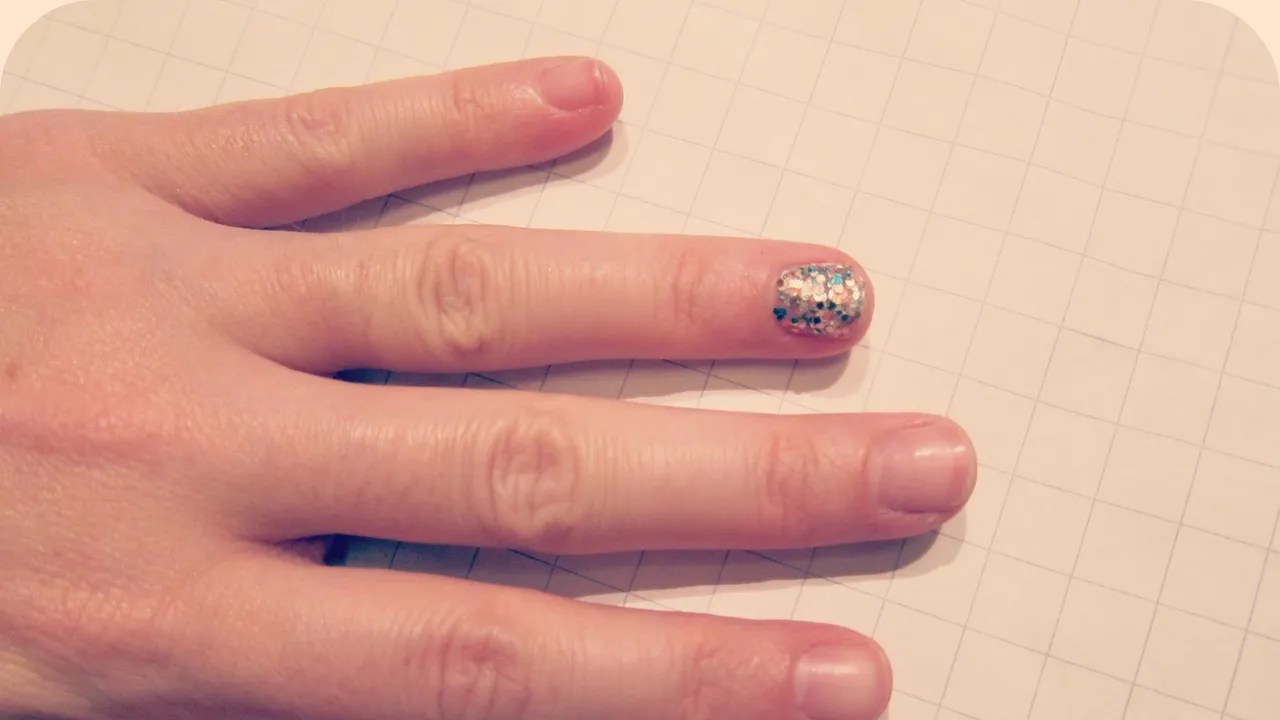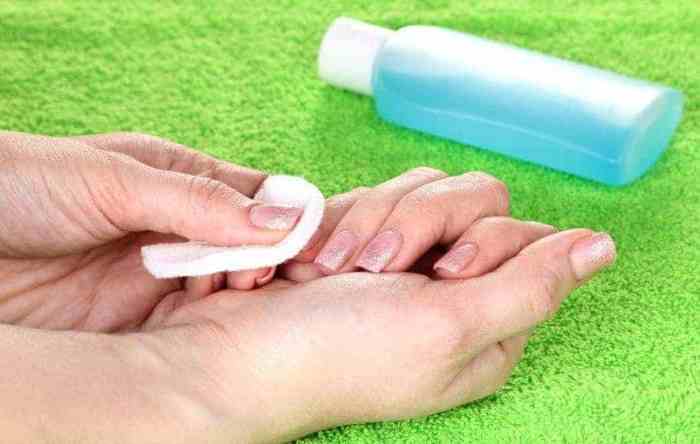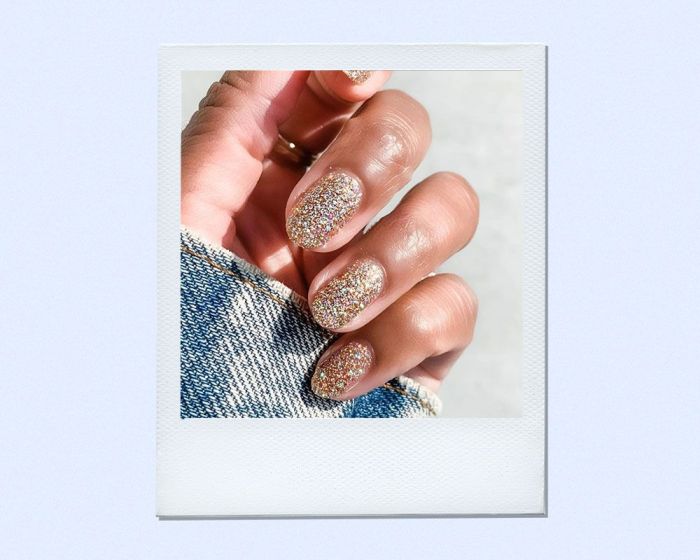How to Remove Glitter Nail Polish
Glitter Nail Polish Removal Challenges
How to remove nail polish with glitter – Removing glitter nail polish presents a significantly greater challenge than removing regular nail polish due to the embedded glitter particles. These particles adhere tenaciously to the nail surface, making simple swiping with remover ineffective. The increased friction and persistence often require more aggressive removal techniques, increasing the risk of nail damage such as peeling, thinning, or even breaking. Different glitter polish formulations also vary in removal difficulty; heavily concentrated glitter polishes are notoriously harder to remove than those with a sparser glitter distribution.
Glitter Polish Formulations and Removal Difficulty

Source: glamour.com
The difficulty in removing glitter nail polish is directly related to the type and concentration of glitter used. Fine glitter polishes tend to be slightly easier to remove than those containing larger, chunky glitter particles. Furthermore, polishes with a high concentration of glitter particles require more time and effort to remove compared to those with a lower concentration.
The base formula of the polish itself can also impact removal difficulty; some base formulas are more resistant to acetone than others.
Methods for Removing Glitter Nail Polish
Several methods exist for removing glitter nail polish, each with its own advantages and disadvantages. Choosing the right method depends on factors such as the type of glitter polish, the individual’s sensitivity to acetone, and the available time.
| Method | Pros | Cons | Time Required |
|---|---|---|---|
| Acetone Soak | Effective, relatively quick for less stubborn glitter | Can dry out nails and skin, strong odor | 10-20 minutes |
| Non-Acetone Soak | Gentler on nails and skin, less harsh odor | Less effective, may require longer soaking time, may not remove all glitter | 20-30 minutes or longer |
| Acetone & Foil Wraps | Highly effective for stubborn glitter, minimizes soaking time | Can be messy, still carries the risk of nail dryness | 10-15 minutes |
| Specialized Glitter Remover | Formulated for glitter removal, may be gentler | Can be more expensive, effectiveness varies by brand | 10-20 minutes, depending on product and polish |
Acetone and Foil Wrap Removal Procedure
This method is highly effective for removing stubborn glitter nail polish. First, saturate cotton pads generously with acetone. Place a saturated cotton pad on each nail, completely covering the nail polish. Secure the cotton pads with small pieces of aluminum foil, pressing firmly to ensure good contact with the nail. After 10-15 minutes, carefully remove the foil and cotton pads.
Gently wipe away any remaining glitter polish with a clean cotton pad or nail polish remover wipe.
Safe Acetone Usage
When using acetone, it’s crucial to ensure proper ventilation to minimize inhalation of fumes. Avoid prolonged skin contact by applying a thin layer of petroleum jelly or cuticle oil around the nail bed before starting the process. If skin irritation occurs, rinse the affected area immediately with cool water and discontinue use.
Tools and Materials Needed
The specific tools and materials required will vary depending on the chosen removal method. However, some essentials include high-quality acetone, cotton balls or pads, aluminum foil (for the foil wrap method), and cuticle oil or hand lotion for post-removal care.
Essential Tools and Material Selection

Source: naildesigncode.com
Choosing high-quality acetone is crucial for effective removal. Lower-quality acetone may be less effective and may contain impurities that can damage nails. Similarly, using soft, absorbent cotton balls or pads prevents scratching the nail surface during removal. Consider using thicker cotton pads for a more comfortable experience during the soaking process.
Alternative Tools
If standard cotton balls are unavailable, soft cloths or tissues can be used as substitutes. In place of aluminum foil, plastic wrap or even rubber bands can be used to secure the acetone-soaked cotton pads to the nails, though foil is generally preferred for its effectiveness.
Preventing Nail Damage
Proper nail preparation before removing polish is essential to minimize damage. This involves gently pushing back cuticles and cleaning the nail surface. Using cuticle oil and hand lotion after removal helps to maintain nail health and hydration.
Nail Preparation and Post-Removal Care
Before beginning the removal process, gently push back your cuticles using a cuticle pusher or orangewood stick. Avoid cutting or aggressively pulling cuticles. After removing the glitter polish, apply a generous amount of cuticle oil to moisturize and nourish the nail bed. Following this, apply a hand lotion to hydrate the surrounding skin.
Recognizing and Treating Nail Damage
Signs of nail damage include brittleness, peeling, thinning, or discoloration. If you notice any of these signs, consider using a nail strengthener and avoid harsh chemicals or aggressive nail treatments. If the damage is severe, consult a dermatologist or nail technician.
Alternative Removal Techniques: How To Remove Nail Polish With Glitter
Several specialized nail polish removers are formulated specifically for removing glitter polish. These often contain stronger solvents or additional ingredients designed to help lift the glitter particles more effectively.
Specialized Glitter Polish Removers, How to remove nail polish with glitter
These products often boast enhanced formulas designed to break down the adhesive properties of glitter polish more efficiently than standard removers. While they may be more expensive than regular removers, their specialized formulations often translate to less effort and potentially less damage to the nails. However, effectiveness varies between brands and products.
Drawbacks of Alternative Methods
Some specialized removers might contain ingredients that could potentially irritate sensitive skin. Always test a small area before applying to all nails. Additionally, the cost of these specialized products is often higher than standard nail polish removers.
Visual Aids: Illustrating the Process
Properly Prepared Nails Before Removal
Properly prepared nails before removal should appear clean, with the nail surface free of any loose debris or excess oil. The cuticles should be gently pushed back, revealing the full nail plate. The nails should have a smooth, even surface, ready for the application of the remover.
Nails After Successful Removal
After successful removal, nails should appear clean and free of any glitter polish residue. The nail surface should be smooth and even, with no signs of peeling or damage. The nails may appear slightly more hydrated from the use of cuticle oil.
Visual Differences Between Damaged and Healthy Nails

Source: byrdie.com
Damaged nails may exhibit signs of brittleness, peeling, or thinning. The nail surface might appear rough or uneven. In contrast, healthy nails after removal will maintain their natural smooth texture and color, appearing strong and intact.
Expert Answers
Can I use regular nail polish remover on glitter polish?
While you can try, regular remover is often ineffective against glitter polish. It may take significantly longer and still leave residue.
How often should I use cuticle oil after removing glitter polish?
Apply cuticle oil daily after removal to keep your cuticles hydrated and prevent dryness or cracking.
What if I get acetone on my skin?
Removing glitter nail polish can be tricky, often requiring extra patience and soaking. The key is to use a high-quality remover and plenty of time. Even a vibrant polish like the essie peak show nail polish , known for its dazzling finish, will yield to persistent soaking and gentle scraping with a wooden cuticle pusher. Remember to always moisturize your cuticles afterward to prevent dryness from the removal process.
Wash the affected area immediately with soap and water. If irritation persists, consult a doctor.
Are there any natural ways to remove glitter nail polish?
Soaking nails in warm, soapy water for an extended period might help loosen some glitter, but it’s less effective than acetone-based methods.
















